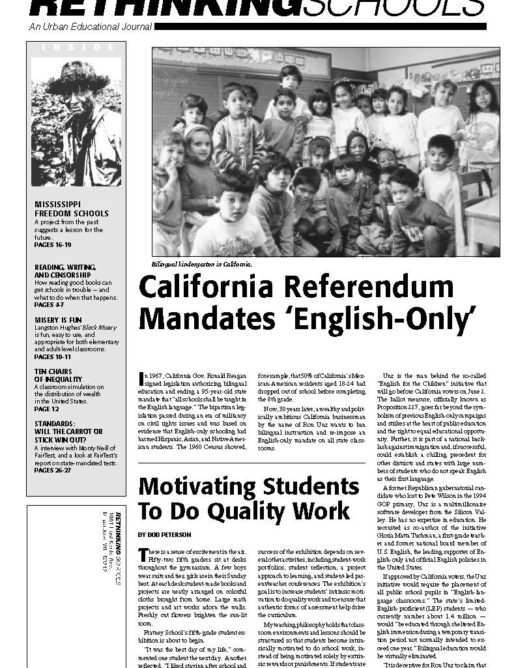Preview of Article:
Tests and Standards: Will the Carrot or Stick Win Out?
An interview with Monty Neill, acting executive director of FairTest,the National Center for Fair & Open Testing, on the results of the organization’s study of state assessment programs and the ever-more-popular cries for “tough national education standards.”

